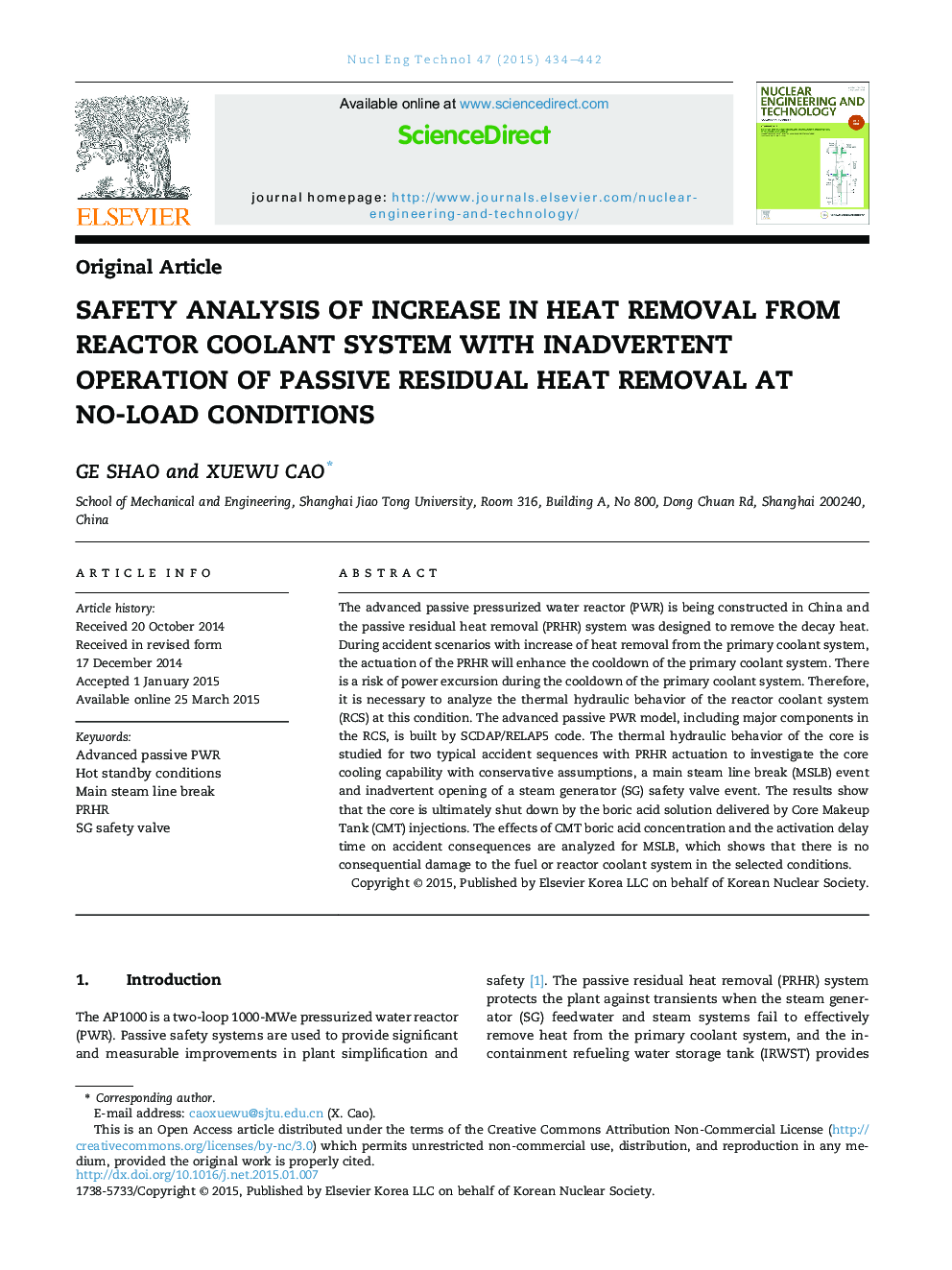| Article ID | Journal | Published Year | Pages | File Type |
|---|---|---|---|---|
| 1740147 | Nuclear Engineering and Technology | 2015 | 9 Pages |
The advanced passive pressurized water reactor (PWR) is being constructed in China and the passive residual heat removal (PRHR) system was designed to remove the decay heat. During accident scenarios with increase of heat removal from the primary coolant system, the actuation of the PRHR will enhance the cooldown of the primary coolant system. There is a risk of power excursion during the cooldown of the primary coolant system. Therefore, it is necessary to analyze the thermal hydraulic behavior of the reactor coolant system (RCS) at this condition. The advanced passive PWR model, including major components in the RCS, is built by SCDAP/RELAP5 code. The thermal hydraulic behavior of the core is studied for two typical accident sequences with PRHR actuation to investigate the core cooling capability with conservative assumptions, a main steam line break (MSLB) event and inadvertent opening of a steam generator (SG) safety valve event. The results show that the core is ultimately shut down by the boric acid solution delivered by Core Makeup Tank (CMT) injections. The effects of CMT boric acid concentration and the activation delay time on accident consequences are analyzed for MSLB, which shows that there is no consequential damage to the fuel or reactor coolant system in the selected conditions.
